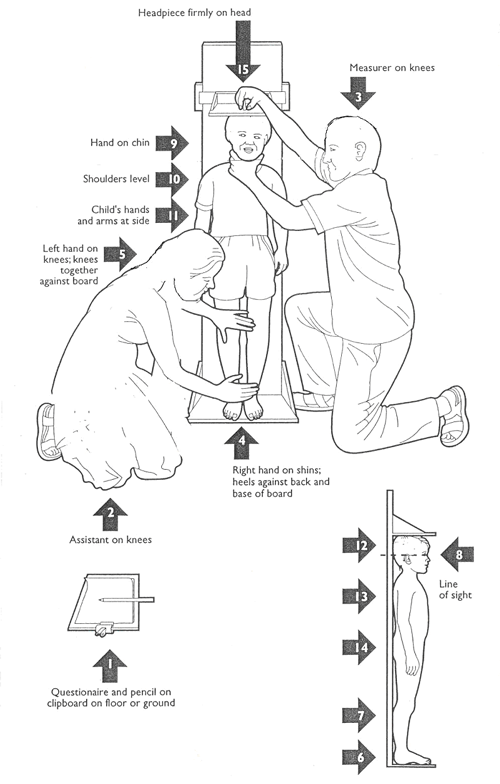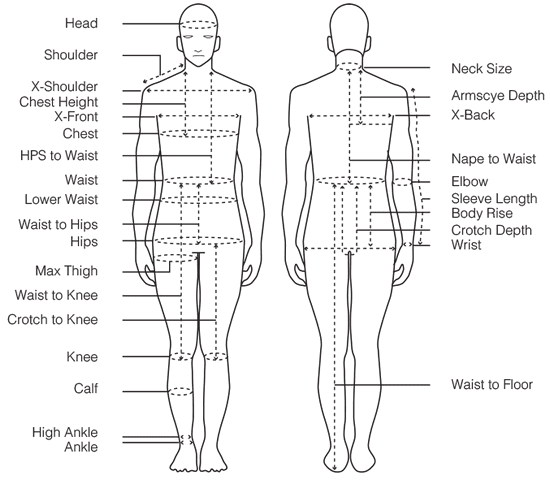- Lot 1, Jalan 15/1, Section 15, Bandar Baru Bangi, Malaysia
- general@niosh.com.my



Anthropometry simply means "measurement of people". The word is derived from the Greek ‘anthros’ meaning man, and ‘metron’ meaning measure. More formally it is the study of the size, shape and strength of the human body, including, mass, volumes, mobility, proportions, centers of gravity, and inertial properties of the whole body and body segments. Anthropometrics is the practice of anthropometry and involves the collection, analysis and application of anthropometric data.
Anthropometry simply means "measurement of people". The word is derived from the Greek ‘anthros’ meaning man, and ‘metron’ meaning measure. More formally it is the study of the size, shape and strength of the human body, including, mass, volumes, mobility, proportions, centers of gravity, and inertial properties of the whole body and body segments. Anthropometrics is the practice of anthropometry and involves the collection, analysis and application of anthropometric data.

When you buy off-the-peg clothes, you expect to go to a shop and find something that more or less fits you. Somehow the manufacturer has found out what size you are and then made something suitable for you. However, if you are an 'unusual' size, either very tall or short, or heavy or thin, then you will probably have difficulty finding something to fit you. You may even have to find some specialist shop that caters for people of unusual size. This happens of course because it is generally uneconomic for a manufacturer to produce items for the relatively few people who want some unusual sizes. But how does the manufacturer know what sizes to produce?
Experience of course, which has been translated into industry standards backed by knowledge about the dimensions of a particular population. Knowing the quantities of various sizes that have sold in the past and then trying to make sufficient clothes of each size to satisfy most customers will keep the manufacturer in business - assuming that people like the styles produced. If the manufacturer gets it wrong then he or she will soon be out of business. Obviously the clothes must fit the customers and therefore must be based on the body sizes of the customers. If the manufacturer is American and decides to market the clothes in Japan then business may not be too good if the same range of sizes are marketed there. Japanese people are generally smaller than Americans and what about body proportions? Suppose a Japanese man has the same stature as an American man, does he have proportionately shorter or longer arms and legs? And what about his overall body shape? Do Japanese men have the same necks and waists as American men of the same height or weight? The problems for the clothes manufacturer are fairly obvious. None of us buy clothes that don't fit.
Criteria of judgement of design features of physical equipment and facilities: comfort, work performance, safety, physical effects. Human body measurements are clearly relevant to the design of equipment or facilities for human use. Such equipment is of three kinds: spaces into which men fit, whether for work, rest or protection; tools or controls which men use; and protective clothing and devices (e.g. helmets, masks, goggles, parachutes) which men wear. Although many basic body measurements like stature, sitting height and weight are generally applicable, each of the three different kinds of end product mentioned above requires some distinct measurements. Clothing design, for example, utilises several body circumferences, special limb lengths (spine-shoulder-fingertip; crotch height), and details of the head, face, hands and feet.
One of the applications of anthropometric data is the design of work spaces, including the work-space envelopes. The limits of the work-space envelope for seated personnel are determined by functional arm reach, which is influenced by such factors as the presence of any restraints, apparel worn, angle of back rest and especially by the direction of arm reach and the nature of the manual activity to be performed. Improper postures caused by poorly designed facilities and methods bend the spine and increase the pressure between the vertebrae. The discs serving as cushions between the vertebrae are then subject to wear and tear (pathological degeneration) which constitutes one of the main reasons of backaches of workers.

The objective in applying anthropometric data will be to improve the design of things and spaces for people to use so that they are more comfortable, efficient, easy to use and safer than previous designs. In order to do this it is necessary to have some idea of the dimensions that are really important for the particular design under consideration, the problems that have been encountered by others and the recommendations, design rules or regulations that are available.
For example if a seat height is to be decided and for economic or other reasons it is not possible to provide any adjustability, e.g. Seats in public places or in public transport, then the most important dimension is popliteal height which is the vertical distance from the sole of the foot to the crook of the knee.
This distance is important to the sitter because if the seat is a little higher than his or her popliteal height then the foot cannot be comfortably placed on the ground and there may be discomfort due to the pressure on the underside of the thigh resting on the seat. For this reason it is generally recommended that the popliteal height of the smaller members of the population is used to determine seat heights.